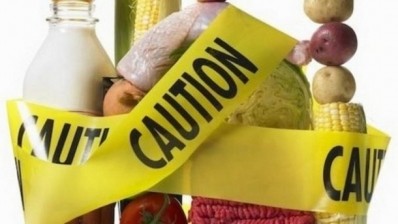FOOD SAFETY
Scores on the doors: the evolution of food safety regulations

Food safety splits into safety for the masses and safety for the individual. Safety for the masses relates to general hygiene to banish food-borne illness, such as salmonella, E.coli and listeria. Safety for the individual relates to allergens information.
Provenance is part of the food safety battle: chefs are empowered when they know where every ingredient in their duck à l’orange comes from, even what the duck ate, where it was reared and how it spent its life.
The other part is food handling. No amount of provenance information makes up for poor handling. Both should go hand in hand.
Chefs who care enough to demand detailed provenance information are more likely to be responsible enough not to get caught out on dodgy hygiene.
The Food Standards Agency (FSA), which launched Regulating our Future guidelines earlier this year, is looking at a new regulatory system for food businesses that will adapt to different types of food businesses.
The FSA is gathering evidence to present to the Government for the mandatory display of the Food Hygiene Rating Scheme (FHRS), or scores on the doors as it used to be known, in England to bring the country in line with Wales and Northern Ireland.
Eoghan Daly, the Chartered Institute of Environmental Health’s (CIEH) policy and technical adviser, says mandatory FHRS display will be “a significant hazard for any food business not doing enough to manage food safety”.
Scotland has a different system, the Food Hygiene Information Scheme. Food Standards Scotland says plans are also afoot there to make displaying hygiene inspection results mandatory.
Nina Purcell, director of the FSA’s regulatory delivery division, says the agency is exploring how it can “reshape” the way food businesses are regulated and develop a more sustainable and modern approach.
“This is to design a new regulatory framework that is dynamic enough to keep pace with innovation in the food sector and harness new technologies, while being flexible enough to adapt to future circumstances.”
Food fraud warning
The CIEH believes Regulating our Future will bring about wholesale change to how food safety regulations are delivered.
“While there are no specific details, the general principles set out by the FSA suggest that greater use will be made of information held by food businesses,” and there will be greater scrutiny of poorly performing ones, says Daly.
Dr Lisa Ackerley, food safety adviser at the British Hospitality Association, is one of many who link provenance to food safety and says everyone needs to be on the lookout for food fraud and make sure they get what they ask for.
“Supply chain control is critical. If it’s too cheap to be true, it is probably fraud or there is something wrong with it – don’t take risks, and be aware of the fact that there will always be someone trying to make money illegally from food.”
Traceable food chain
Happerley, a new provenance and traceability scheme established by Gloucestershire farmer Matthew Rymer, launched a consumer campaign with The Observer last month called #namethefarm to make food business supply chains transparent.
Membership of Happerley is open to primary producers and intermediaries, such as abattoirs, processors, food transporters, catering butchers, packers and manufacturers, restaurants and consumers.
Its aims include creating total transparency about where food and its ingredients come from, how it has been produced, ensuring ‘local’ really does mean local and reducing the potential for another ‘Horsegate’.
The Happerley process provides producers with a ‘passport number’ which they put onto their packaging. Intermediaries and retailers are given a membership number that they display in their premises. Enter the passport number into the Happerley website and the provenance of the product is given.
Rymer says: “The problem I think a lot of pub restaurants face is going in an ever decreasing spiral towards bottom cost denominators and not being able to differentiate or authenticate the food supply.”
This impacts food safety, as Rymer says: “Because the procedures get loose, the governance gets weak and it’s a difficult and challenging market.”
Happerley freehouse member the Kings Arms, in Mevagissey, Cornwall, agrees that knowing the provenance of food served is “definitely” where the future of food safety lies.
Landlady Helen Nathan says husband Kris sources all its fish and seafood direct from the boats in the bay at Mevagissey. All meat is local and Kris cooks everything from scratch, including the sourdough bread.
Nathan points out that no amount of provenance information will make up for lack of cleanliness, how food is stored and the way it is prepared on the premises.
“What annoys Kris is all the paperwork he has to fill out. He seems to spend more of his time filling out paperwork than actually prepping the food. I’m hoping it will improve. We are trying to streamline it all but councils have a certain protocol and it takes a lot more time than it should.”
Technology will play an increasing role in simplifying food safety administration, such as Kafoodle Kitchen – full menu software management to help manage ingredients, recipes and allergen and nutritional information.
Lee Curtis, proprietor of the Bowler Pub & Kitchen, in Clerkenwell, in the City of London, swears by the transparency the system provides when designing menus, recipes and ordering ingredients.
Advanced hygiene checks
Andrew Scott, director of Victus Consultancy, says: “Cross-contamination is still a real hazard as some allergy sufferers only need a very small trace of the affecting allergen to have a potentially life-threatening attack. Kitchen managers and chefs need to have a really robust hygiene system to reduce the risk of cross-contamination.”
Dr Martin Nash, product line manager at Checkit, a work management memo and automated monitoring solution that gives organisations the ability to see whether checks have been completed over multi-sites and locations, says paper-based food safety systems will become a thing of the past “very soon” as technology takes over the management of key food hygiene tasks.
“When it’s busy in the kitchen it is easy to miss vital checks or put off completing food safety paperwork,” he asserts “No matter how good a pub’s practices are, a food inspector will rate an establishment at zero if it cannot show a suitable audit trail.”
Employing of a high number of short-term, part-time staff makes training “a nightmare”, Dr Nash adds. “Smart food safety technology makes it painless for pubs to keep compliant from a food safety perspective and will satisfy inspectors’ requirements.”







